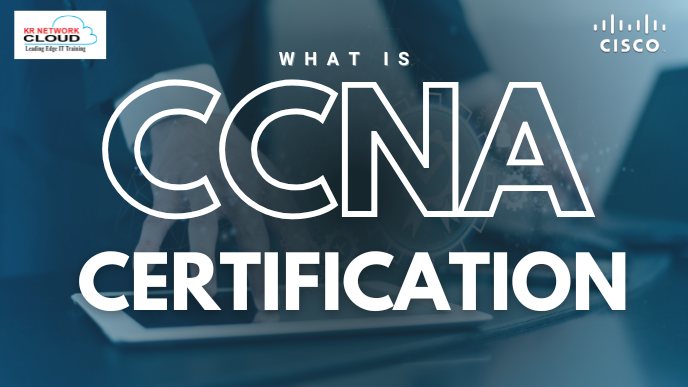Unlocking Scalable Cloud Storage with Red Hat Ceph Storage: A Comprehensive Guide

- KR NETWORK CLOUD
- July 31, 2025
Introduction to Red Hat Ceph Storage
In today’s data-driven world, organizations need scalable, resilient, and cost-effective storage solutions. Red Hat Ceph Storage is a leading open-source platform designed to meet these demands, offering unified object, block, and file storage for cloud environments. Whether you’re pursuing Red Hat Ceph training, preparing for the Red Hat CL260 exam, or aiming for Red Hat Ceph certification, understanding Ceph’s architecture and capabilities is essential. This blog provides a comprehensive overview of Red Hat Ceph Storage, covering its deployment, configuration, and management, with insights aligned with the CL260 and EX260 curricula.
Understanding Red Hat Ceph Storage Architecture
Storage Personas and Their Roles
Red Hat Ceph Storage supports diverse storage personas, including object, block, and file storage, making it a versatile solution for cloud environments. These personas cater to different use cases, such as archival storage, virtual machine disks, or file sharing. In Red Hat Ceph training, you’ll learn how to describe and configure these personas to meet specific workload requirements.
Object Storage: Ideal for unstructured data like images, videos, and backups.
Block Storage: Provides high-performance storage for virtual machines via RADOS Block Device (RBD).
File Storage: Enables shared file systems for collaborative workloads.
Ceph Architecture and Management Interfaces
The Red Hat Ceph Storage architecture is built on the Reliable Autonomic Distributed Object Store (RADOS), which ensures scalability and fault tolerance. Key components include:
Monitors (MON): Maintain cluster maps and manage cluster state.
Object Storage Daemons (OSDs): Handle data storage and replication.
Managers (MGR): Provide monitoring and management interfaces.
Metadata Servers (MDS): Support CephFS for file storage.
In Ceph training courses, such as Red Hat CL260, you’ll explore management interfaces like the Ceph CLI, Dashboard, and APIs. These tools simplify cluster administration, enabling you to monitor health, configure settings, and troubleshoot issues efficiently.
Deploying Red Hat Ceph Storage
Initial Cluster Deployment
Deploying a Red Hat Ceph Storage cluster involves setting up monitors, OSDs, and managers. The Red Hat CL260 course guides you through this process, emphasizing best practices for hardware selection, network configuration, and initial setup. Key steps include:
Installing Ceph packages on Red Hat Enterprise Linux.
Configuring monitor nodes to establish cluster quorum.
Deploying OSDs using BlueStore for optimal performance.
Expanding Cluster Capacity
As data needs grow, Red Hat Ceph Storage allows seamless expansion. By adding new OSDs or nodes, you can scale storage capacity without downtime. The Ceph online course covers guided exercises on expanding clusters, ensuring you can handle dynamic workloads effectively.
Configuring a Red Hat Ceph Storage Cluster
Managing Cluster Configuration Settings
Proper configuration is critical for optimizing Red Hat Ceph Storage performance. The CL260 exam tests your ability to manage settings such as replication levels, placement groups (PGs), and crush maps. Key tasks include:
Setting replication or erasure coding for data durability.
Tuning PGs for balanced data distribution.
Configuring authentication using CephX keys.
Cluster Monitors and Networking
Monitors maintain cluster health, while networking ensures low-latency communication between components. In Red Hat Ceph training, you’ll practice configuring monitor nodes and optimizing network settings to prevent bottlenecks, ensuring high availability and performance.
Creating Object Storage Cluster Components
BlueStore OSDs and Logical Volumes
Red Hat Ceph Storage uses BlueStore OSDs for efficient data management. In Ceph training courses, you’ll learn to create OSDs using logical volumes, leveraging tools like LVM to partition drives. This approach maximizes storage efficiency and performance.
Pool Creation and Configuration
Pools are logical partitions in Ceph that define how data is stored. The Red Hat CL260 curriculum covers creating and configuring pools, including setting replication levels and enabling features like compression or encryption.
Ceph Authentication
Security is paramount in Red Hat Ceph Storage. CephX authentication ensures secure access to cluster resources. Through guided exercises in Red Hat Ceph certification, you’ll learn to manage authentication keys and restrict access to specific pools or users.
Managing and Customizing Storage Maps
CRUSH Maps
The CRUSH (Controlled Replication Under Scalable Hashing) map determines how data is distributed across OSDs. Customizing CRUSH maps allows you to optimize data placement for performance or fault tolerance. In Ceph online courses, you’ll practice editing CRUSH maps to align with specific storage requirements.
OSD Maps
OSD maps track the state of storage daemons. Managing OSD maps involves adding, removing, or reweighting OSDs to balance data distribution. These skills are critical for the Red Hat EX260 exam, ensuring you can maintain a healthy cluster.
Providing Block Storage with RADOS Block Device (RBD)
The RADOS Block Device (RBD) provides high-performance block storage for virtual machines and containers. In Red Hat Ceph training, you’ll learn to:
Create and map RBD images to clients.
Configure RBD for use with Kubernetes or OpenStack.
Optimize RBD performance for I/O-intensive workloads.
RBD’s integration with cloud platforms makes it a cornerstone of Red Hat Ceph Storage, and mastering it is a key objective of the CL260 exam.
Why Pursue Red Hat Ceph Training and Certification?
Enrolling in Red Hat Ceph training or a Ceph online course equips you with the skills to deploy and manage scalable storage solutions. The Red Hat CL260 course prepares you for the Red Hat EX260 exam, validating your expertise in Red Hat Ceph Storage. Benefits include:
Career Advancement: Red Hat Ceph certification enhances your resume, showcasing expertise in cloud storage.
Hands-On Skills: Guided exercises and labs provide practical experience.
Industry Recognition: Red Hat certifications are globally respected, opening doors to new opportunities.
For more details on Red Hat Ceph training or SuperGrok subscriptions for enhanced access to learning resources, visit x.ai/grok.
Conclusion
Red Hat Ceph Storage is a powerful, scalable solution for modern cloud storage needs. By mastering its architecture, deployment, and management through Red Hat CL260 and Ceph training courses, you can unlock its full potential. Whether you’re preparing for the CL260 exam, pursuing Red Hat Ceph certification, or exploring Ceph online courses, this knowledge empowers you to build resilient storage systems. Start your journey with Red Hat Ceph today and elevate your cloud storage expertise!
Click Here: Watch Now
FAQ
1. What is Red Hat Ceph Storage?
Red Hat Ceph Storage is an open-source, software-defined storage platform designed for cloud infrastructure and web-scale object storage. It provides unified object, block, and file storage, scaling to petabytes and beyond using commodity hardware. It integrates with platforms like Red Hat OpenStack and OpenShift, offering fault-tolerant, self-healing storage for modern data pipelines.
2. What are the key components of Red Hat Ceph Storage?
Red Hat Ceph Storage clusters consist of:
- Monitors (MON): Maintain cluster maps and topology.
- Object Storage Daemons (OSDs): Manage data storage and replication using BlueStore.
- Managers (MGR): Provide monitoring and management interfaces.
- Metadata Servers (MDS): Support Ceph File System (CephFS) for file storage. These components ensure scalability and high availability, critical for cloud deployments.
3. How does Red Hat Ceph Storage support scalable cloud solutions?
Red Hat Ceph Storage supports scalable cloud solutions by:
- Enabling storage for hundreds of containers or virtual machines.
- Scaling to tens of petabytes and billions of objects without performance degradation.
- Supporting hybrid cloud deployments with Amazon S3 and OpenStack Swift APIs.
- Providing self-healing and self-managing capabilities to minimize operational overhead.
4. What is the Red Hat CL260 course, and how does it relate to Red Hat Ceph Storage?
The Red Hat CL260 course, “Cloud Storage with Red Hat Ceph Storage,” trains storage administrators and cloud operators to deploy, manage, and scale Red Hat Ceph Storage clusters. It covers cluster configuration, object storage components, storage maps, and RADOS Block Device (RBD) provisioning, preparing students for the Red Hat EX260 exam and Red Hat Ceph certification.
5. What skills are tested in the Red Hat EX260 exam?
The Red Hat EX260 exam validates expertise in Red Hat Ceph Storage through practical tasks, including:
- Deploying and expanding Ceph clusters.
- Configuring monitors, OSDs, and networking.
- Managing CRUSH and OSD maps for data placement.
- Providing block, object, and file storage using RBD, RADOS Gateway, and CephFS. It is part of the Red Hat Ceph certification path.
6. How can I prepare for the Red Hat Ceph certification?
To prepare for Red Hat Ceph certification:
- Enroll in Red Hat Ceph training like the Red Hat CL260 course.
- Take Ceph online courses for hands-on labs and guided exercises.
- Study cluster deployment, configuration, and management using official Red Hat documentation.
- Practice common administrative commands listed in the Red Hat Ceph Storage Cheat Sheet.
7. What are the benefits of using Red Hat Ceph Storage for enterprises?
Red Hat Ceph Storage offers:
- Scalability: Supports exabyte-scale clusters on commodity hardware.
- Cost Efficiency: Reduces costs compared to traditional NAS/SAN solutions.
- Flexibility: Integrates with OpenShift, OpenStack, and Kubernetes for hybrid cloud workloads.
- Resilience: Provides fault tolerance, self-healing, and geo-replication for disaster recovery.
8. How does Red Hat Ceph Storage handle data security?
Red Hat Ceph Storage ensures data security through:
- CephX Authentication: Restricts access to cluster resources using keys.
- Encryption: Supports full disk encryption in deployments like MicroCeph.
- Multisite Awareness: Enables secure geo-replication for data protection. These features are covered in Red Hat Ceph training and tested in the CL260 exam.
9. What is the role of BlueStore in Red Hat Ceph Storage?
BlueStore is the default storage backend for Red Hat Ceph Storage OSDs, replacing FileStore. It directly manages HDDs and SSDs, improving performance and efficiency. In Red Hat Ceph training, you’ll learn to create BlueStore OSDs using logical volumes for optimized data management.
10. Can Red Hat Ceph Storage integrate with other platforms?
Yes, Red Hat Ceph Storage integrates seamlessly with:
- Red Hat OpenShift: Provides persistent storage for containers.
- Red Hat OpenStack: Supports Cinder, Glance, and Swift APIs.
- Kubernetes: Offers block storage via RBD.
- Backup Solutions: Certified with various backup applications for data protection.






